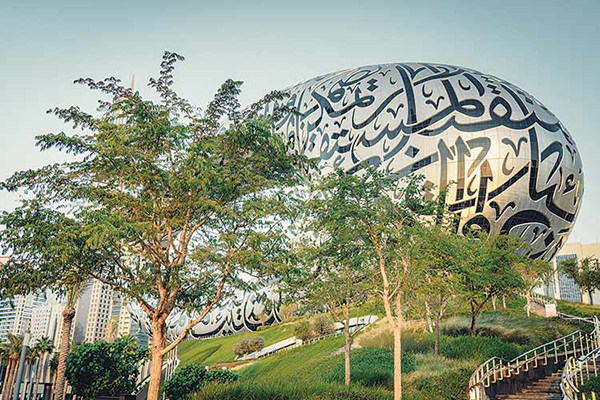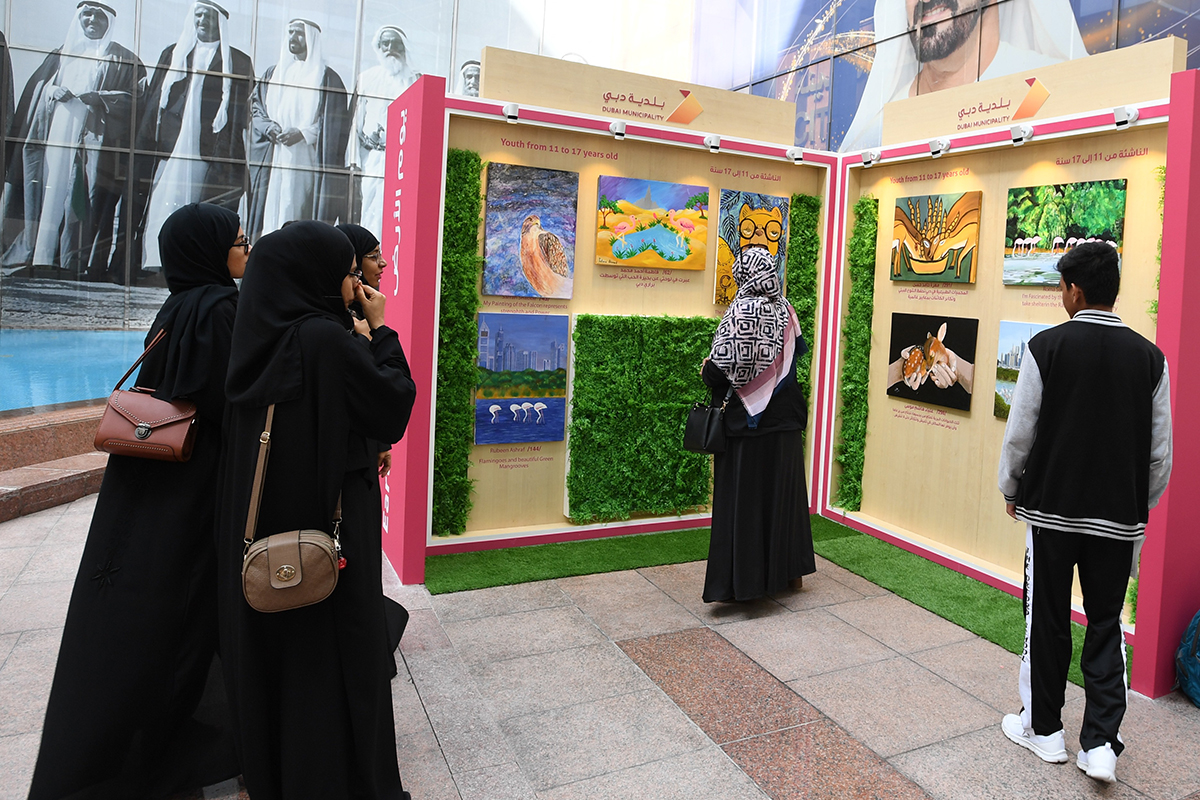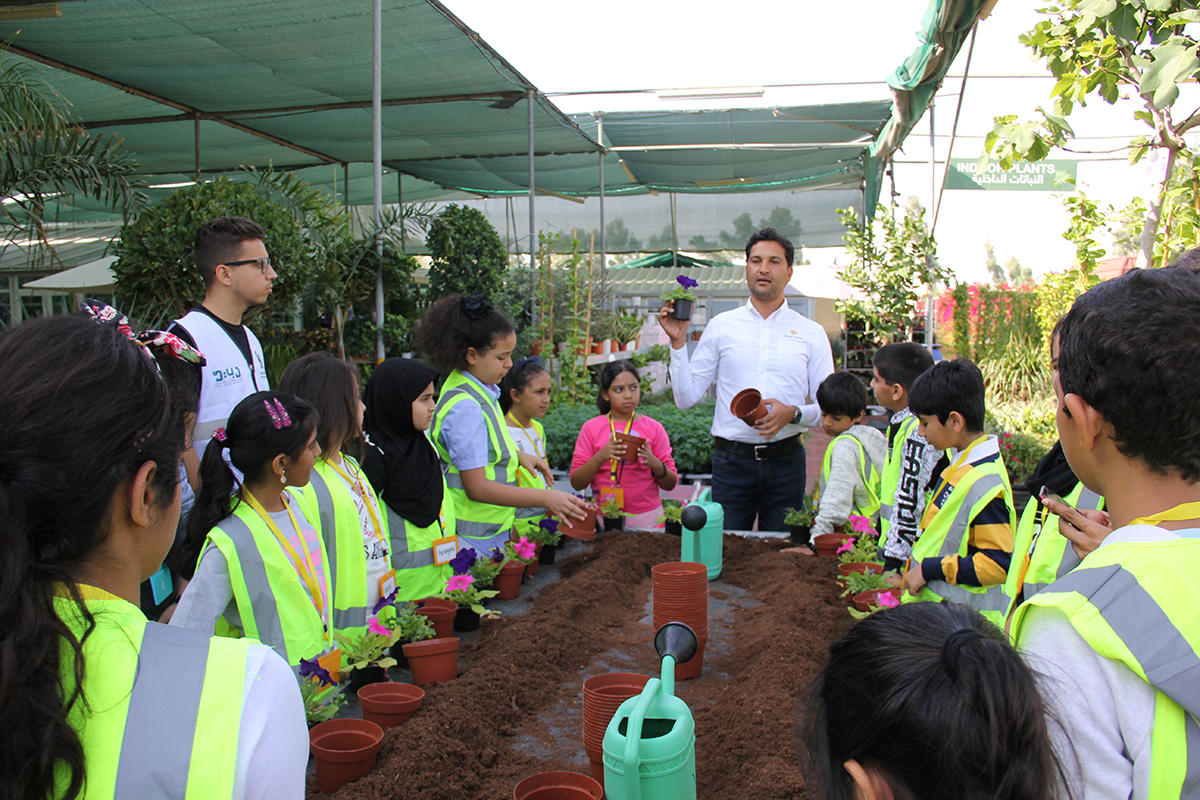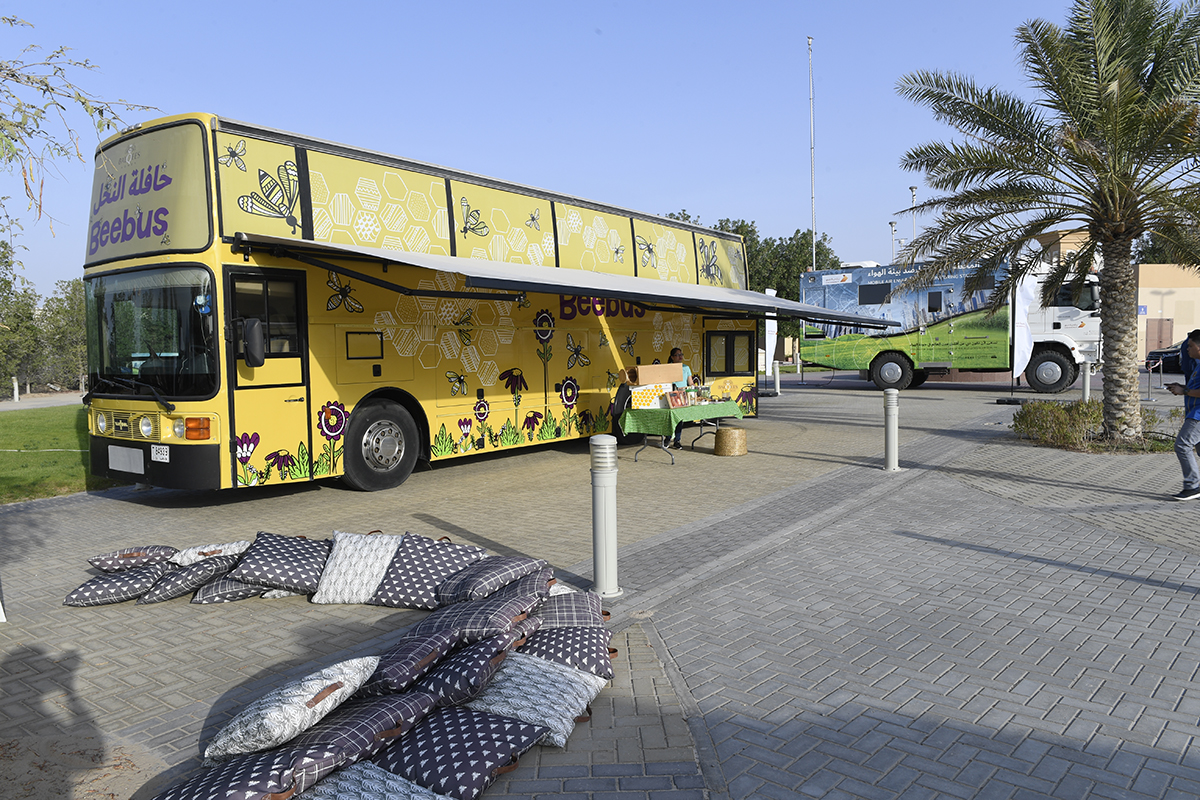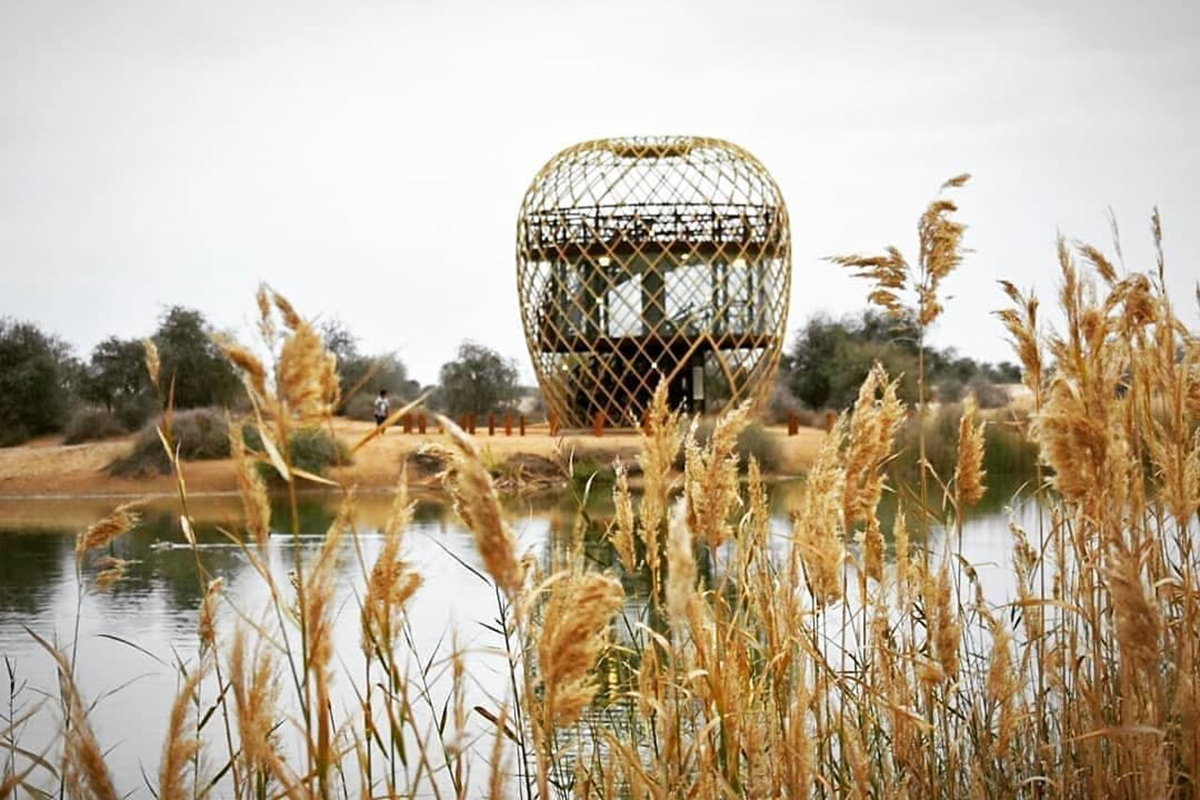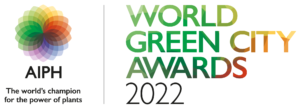Addressing the urban challenge
Breadth of the issue – How are the problem(s) that are being tackled by your initiative affecting citizens/local businesses or a significant component of the local wildlife?
The Dubai 2040 Master Plan considerably expands the future role of “nature” in the evolution of the city, stipulating a 60% increase in the size of nature reserves and natural areas by 2040. This commitment by the Dubai Government to utilize native species and habitats for “Developing a Happy and Sustainable City” aligns significantly with:
- Mounting evidence in fields of study such as biophilia of the important human health and well-being, societal, environmental and economic benefits of close, regular contact with nature.
- Multiple benefits to date for the City of the existing 130,000 HA Protected Areas Network.
Lessons from the past several decades show that the intensive use of exotic plant species, while uplifting for the spirit and enjoyment of the city by people, poses environmental and ecological challenges including reduced native biodiversity.
Exotic plants tend to have:
- high water demands and maintenance requirements;
- low tolerance of the prevailing heat, salinity, dust, and low fertility soils;
- Pesticide applications harm many unintended targets such as bees;
- Synthetic fertilizer use contributes atmospheric N2O, one of the major anthropogenic sources of GHGs.
Natural areas avoid all of these issues. Fortunately, the UAE’s diverse indigenous biodiversity has remarkable resiliency to Dubai’s harsh environmental conditions. Such factors facilitate the management of the protected areas, and also the use of native plants for landscaping.
Dubai’s Protected Areas intentionally support nature connections by facilitating access, and setting-up modern facilities and infrastructure like yoga platforms, outdoor theatres, bird blinds, walking trails, and recreational areas.
Depth of the issue – How seriously are the problems being tackled by your initiative impacting the life of the citizens/businesses/wildlife concerned?
Dubai is a vibrant and progressive city, hosting a wealth of biodiversity located within eight protected areas. Several benefits realized by “exploiting” its nature are:
- Raising International Conservation Reputation of Dubai: Three of Dubai’s Protected Areas have been declared Wetlands of International Importance under the Ramsar Convention by International Union for the Conservation of Nature:
a. Ras al Khor Wildlife Sanctuary (RAKWS)
b. Jabal Ali Wildlife Sanctuary
c. Hatta Mountain Reserve
The outstanding nature of Dubai led to it hosting COP13 of the Ramsar Convention (2018); the largest environmental event ever held in Middle East.
- Tourism: Dubai’s Protected Areas are managed to attract local and international visitors (RAKWS attracts visitors from over 90 countries annually) to connect with nature, while protecting their natural integrity. Opportunities for appropriate commercial tourism activities are embraced. Even small measures are successful. Construction of bird hides at RAKWS increased visitor numbers from 17,454 (2014) to 92,309 (2016) and 120,563 (2018). Many return visits have been recorded. Based on such successes, construction of major Eco-tourism infrastructure is underway at RAKWS, Al Marmoom and Hatta Mountain Reserves.
- Environmental Education. Natural areas of Dubai are the central focus of numerous, annual environmental awareness initiatives including:
i. “GoWildDubai” Arts Competition (attracting hundreds of paintings, photographs)
ii. Summer and Winter Environmental Camps for youth;
iii. Environmental Schools Program (engages 2000+ students annually)
PAs are central to annual campaigns such as:
- International Migratory Birds Day
- World Wetlands Day
- Earth Hour
- Earth Day
- World Environment Day
- World Soils Day.
The power of plants and natural ecosystems to deliver benefits
How is the initiative shaped by scientific evidence of the potential for plants and natural ecosystems to deliver benefits?
Guided by the inspiring and unwavering visions of the Late Sheikh Zayed and HH Sheikh Mohammed Al Maktoum, Vice-President and Prime Minister of UAE and Ruler of the Emirate of Dubai, the very character of Dubai is undergoing a green evolution of unparalleled proportions and speed. Protected areas are central to this process.
Dubai is at the threshold of becoming the world’s largest and most sustainable oasis; an Emirate-scaled Innovation. At the heart of this transformation is the re-greening of the city with predominantly native flora, and an expansion of natural areas throughout many parts of Dubai. Actions and energies driving this remarkable change are similar in uniqueness and magnitude with those that enabled Dubai to transform from a relatively small coastal community in 1970 to one of the world’s greatest cities just 50 years later.
For example:
- By 2018, 30% of the Dubai Urban and Peri-urban Environments were designated as protected areas.
- Both protected areas located entirely within the City Limits (Ras al Khor and Jabal Ali Wildlife Sanctuaries) have been formally recognized as by IUCN as Ramsar Wetlands of International Importance.
- Al Marmoom Desert Conservation Reserve is the UAE’s first fenceless protected area
- Dubai 2040 Masterplan committed to a further 60% increase in natural areas by 2040
- An example of the natural area extensions into the city is the native plant landscaping at the Museum of the Future.
How has the city exploited the potential of plants and associated ecosystems to deliver more than one benefit?
Protected area design and management is led by the Environment Department of Dubai Municipality but involves close collaboration with many entities, both within Government, private sector and the public. Each of the Protected Area Management Plan stipulates a Steering Committee which is composed of representatives from key sectors. Entities involved in the PA management include:
- Dubai Municipality: At least 15 Departments may have a role at one or more PA. These include:
- a. Waste Management
- b. Urban Planning and Studies
- IT
- Public Health Services
- Dubai Central Labs
- Transportation
- Agricultural and Irrigation
- Public Parks and Recreational
- Other Government Authorities:
- the Ruler’s Office
- Dubai Sports Council
- Dubai Electricity and Water Authority
- Roads and Transport Authority
- Dubai Police.
- Private Sector and other Organizations:
- Emirates Group
- EMAAR Properties
- Nakheel Properties
- Dubai Creek Harbour Development
- Dubai Healthcare City
- Festival City Developments
- Al Maha Resort and Spa
- Emirates Nature
- Emirates Natural History Group
- Universities, colleges, and schools.
Innovative and Collaborative Solution
How does the initiative show evidence of feasibility, including on-going financial and logistical support?
Issues being addressed by the Protected Areas Project are targeted at key sustainability challenges facing most cities in the world, particularly those located in hot, arid regions. Expansion and integration of nature into the city and per-urban environment via the protected areas network, supports key city goals, including:
- Human Health and Well-being: A theory well supported by the scientific literature on biophilia, people’s state of mind tends to be much better when in regular, close contact with nature. Of note during the Covid 19 pandemic, most people preferentially sought out beaches and green spaces to spend their time, while many acquired pets and began gardening for the first time to improve mental health.
- Environmental Quality: Air quality is an ongoing environmental challenge facing Dubai. Green spaces improve local air quality by dispersing PM pollution; and are cooler, thus reducing heat island effects. Cleaner air also means less crime and illness, and better cognitive function of people.
- Climate change mitigation and adaptation: Woody vegetation, such as mangroves, is an effective way to sequester carbon. Vegetation also reduces climate change effects. For example, besides creating shade and food, zones within 2 meters of native Ghaf Trees (Prosopsis cineraria) are markedly cooler due to the fine mist they produce.
- Increasing native biodiversity: The World Wildlife Fund has reported on the decline in the sizes of populations by 60% of known major wildlife groups (e.g., birds, mammals, fish), including those vital for human survival (e.g., bees).
In what ways is the initiative innovative?
According to the Feb 28, 2022, IPCC (International Panel on Climate Change), observations of climate change impacts in Asia (which includes Dubai) have been medium to high in many areas, including terrestrial ecosystems, coastal environments, and on health and well-being.
The report states with “very high confidence” that climate change has adversely affected physical health of people globally (e.g., mortality, morbidity, food, and water-borne diseases, etc.) and in urban settings, also on infrastructure and livelihoods. The report further states that the degradation and destruction of ecosystems increases the vulnerability of people to Climate Change risks. This includes unsustainable use of natural resources, habitat fragmentation and ecosystem damage by pollutants. Highest risks occur where species are close to the upper thermal limits and along coastlines, two-character traits of Dubai. However, the report also states with “high confidence” that such effects can be mediated through natural and human systems.
Dubai and its people have been prospering in a hyper-arid and hot climate since its inception. And although the resilience of the original residents and the wildlife is high to both the direct impacts of climate change (e.g., increased average annual temperatures, more frequent and severe storm events) and its indirect impacts (e.g., amplification of impacts of challenges like air quality), the risks are higher and could be approaching thresholds. To this end the Protected Areas Project is planned and expected to be of significant utility in ensuring that Dubai has high resilience to the impending climate change impacts.
How is the initiative supported by collaborative working across disciplines and sectors?
According to the Feb 28, 2022, IPCC (International Panel on Climate Change), observations of climate change impacts in Asia (which includes Dubai) have been medium to high in many areas, including terrestrial ecosystems, coastal environments, and on health and well-being.
The report states with “very high confidence” that climate change has adversely affected physical health of people globally (e.g., mortality, morbidity, food, and water-borne diseases, etc.), and in urban settings, also on infrastructure and livelihoods. The report further states that the degradation and destruction of ecosystems increases the vulnerability of people to Climate Change risks. This includes unsustainable use of natural resources, habitat fragmentation and ecosystem damage by pollutants. Highest risks occur where species are close to the upper thermal limits and along coastlines, two-character traits of Dubai. However, the report also states with “high confidence” that such effects can be mediated through natural and human systems.
Dubai and its people have been prospering in a hyper-arid and hot climate since its inception. And although the resilience of the original residents and the wildlife is high to both the direct impacts of climate change (e.g., increased average annual temperatures, more frequent and severe storm events) and its indirect impacts (e.g., amplification of impacts of challenges like air quality), the risks are higher and could be approaching thresholds. To this end the Protected Areas Project is planned and expected to be of significant utility in ensuring that Dubai has high resilience to the impending climate change impacts.
How does the initiative demonstrate evidence of community support?
Goals of DM Strategic Management Plans (e.g., 2015 – 2022) are supported by the rigorous application of a comprehensive quality assurance system based on best international standards. KPIs are the bread and butter of this system, with both annual internal and external audits by independent national and international auditors used to validate the results. In addition, external validations of the high standards of performance of DM are obtained through awards, including for PA management. Examples of major achievements are provided below:
- Goal: Protect major habitat types of: Coastal, Marine, Desert and Mountain: Yes (2014)
- Goal: 27% of Dubai to be Protected Area (Aichi Target 11, IUCN): Yes (2014)
- Goal: 30% of Dubai as Protected Area Post2020 Target 3: Yes (2018)
- Expand the percentage of Natural Areas by 60% (by 2040): In Progress
- International Recognition of Protected Areas.
- 3 PAs formally recognized by the IUCN as Wetlands of International Importance under the Ramsar Convention (Ras Al Khor; Hatta Mountain; Jabal Ali)
- The RAKWS recognized as an Important Bird Area (IBA) by Birdlife International
- RAKWS won the GCC Award for Environment and Wildlife – The Best Protected Area in the Gulf Countries and Middle East Award for Excellence of Municipalities in the category of Environmental Protection and Natural Resources (2016).
- 2 Design Identity Awards 2018: Bird Watching Platform and Covered Amphitheatre, Al Marmoom Conservation Reserve
- Gold WAN (World Architect News) Award (2020) Future Projects – Urban Design: RAKWS Development Project
Implementation, Impact and Replicability
How does the initiative demonstrate evidence of a track record of success against pursued objectives?
The Protected Areas Project for Dubai is the flagship of the Environment Department, and a major ongoing initiative of the Government since 1985 when RAKWS was established. An expansion from one Protected Area to 8 covering 30% of the Emirate of Dubai by 2018, and planned expansion of 60% by 2040 demonstrates the clear commitment by the Government towards greening the Urban and Peri-urban environments of Dubai.
Additional evidence of financial and logistical support includes:
- 1. The majority of Environment Department resources, including its 176 staff work in the Natural Resources Conservation Section, which is directly responsible for the management of the 8 Protected Areas, or provide support through monitoring and infrastructure development, including:
- Dubai Clean Air Program (DCAP)
- Dubai Coast Smart System (DCSS)
- Natural Resources Management Program
- Design and management of infrastructure in the Protected Areas, including Bird Blinds, Yoga Platforms, Outdoor Theatres, Bike Track
- As many as 15 or more Departments in Dubai Municipality are explicitly responsible to implement some part of a PAMP.
- 5 other government authorities have a significant role in PAMP implementation
- 4. 550 million USD for 29 projects adding 8 million square meters of green space within Dubai’s residential and commercial areas, including:
- 27 million USD RAKWS Development Project
- 354 million USD Hatta Development Plan, to develop Hatta’s Natural areas, tourism attractions, and protect the environment
- 2040 Masterplan detailing Dubai’s “green” growth plan, including 60% expansion of the natural areas.
How has the initiative had a ripple effect beyond the scope of the initiative itself, thereby demonstrating a change in the city’s and/or its partners’ way of working with plants?
Given that the PAs are located in the urban and peri-urban environments, that their functions are to protect biodiversity and connect people with nature, the support of the community has been essential and is strong.
DM is tapping into the enormous potential of all its PAs for eco-tourism and environmental education. Through its awareness programmes, DM invited people from all walks-of-life and corporate sector to participate in community engagement activities (e.g., coastal clean ups and mangrove planting), seminars, events and discussions. Such activities are growing in popularity with requests from many organizations, corporations and even individuals received regularly.
The flagship PA is the RAKWS. Located in the heart of Dubai and against the backdrop of the Dubai Skyline, Ras Al Khor Wildlife Sanctuary provides a myriad of services to the community. The RAKWS has become one of the important spots for tourists, bird enthusiasts, international organisations, schools as well as corporations:
- On World Wetlands Day 2018, the Environment Department engaged 1110 students from 15 primary and secondary schools, and several universities.
- Since the construction of Bird Hides, visitor numbers have risen steadily, from 17,454 in 2014 to 92,309 in 2016, and 120, 563 in 2018.
- Over 2 dozen tour companies use our PAs. In 2018, 98% of the companies expressed their satisfaction survey with the visitor services at Dubai’s wildlife sanctuaries.
- Key partners play significant roles in the management of protected areas, for example:
- Emirates Group: Dubai Desert Conservation Area
- Emirates Environmental Group: Jabal Ali Wildlife Sanctuary
How have other cities expressed interest in the initiative, or what potential does it have to interest other cities and be customised to their own circumstances?
One of the principal activities of the Environment Department is daily inspections of habitat conditions in each protected area. Their purpose is to identify matters requiring attention (e.g., habitat degradation or damage, wildlife injuries) in order to keep it in optimal condition for biodiversity, and for visitors to enjoy.
In some cases, monitoring has led to major changes in the PA management. For example:
- Boundaries of the Al Marmoom Conservation Reserve Area were increased in 2018. This decision was driven by two principal factors:
- Anticipated increase in the Aichi Biodiversity Target 11 from 27 to 30% PA under the Convention on Biological Diversity.
- Outcomes of the comprehensive biodiversity study of the Emirate of Dubai which recommended an expansion of Al Marmoom to secure important habitats.
- Following the designation of the 6 new Protected Areas in 2014, monitoring revealed that livestock operations, principally camel grazing, were having a significant deleterious impact on the plants within the Protected Areas. In response, most farms inside Al Marmoom were closed, and relocated outside of the PA. The lands have shown a substantial recovery since, with a more natural balance of native plant abundance and distribution.
- Monitoring of tourism activities in Dubai Desert Conservation Reserve led to the designation and strict enforcement of tourism trails which visitors are prohibited from leaving. This was done to reduce the impacts of traffic on desert flora and fauna. These measures have been highly effective at the protection and recovery of the habitats.
Sustainability and Resilience
What efforts have been made to reduce the carbon footprint of the initiative?
The Protected Area Project has evolved significantly since the designation of Ras Al Khor Wildlife Sanctuary in 1985. With Protected Areas now covering 30% of the Emirate of Dubai since 2018, the plan is for natural areas and native plants to be introduced throughout the City of Dubai. In total, the Dubai 2040 Master Plan stipulates a 60% increase in the land area occupied by native plant species by 2040. This is not a ripple effect but a dramatic transformation in the landscaping of the city where the current plantings (greater than 90% of which are exotic).
Another clear ripple effect in how plants are being used in Dubai is with agriculture. One small farm inside the Dubai City Limits is demonstrating the effectiveness of working with nature to grow some of the most delicious foods and useful medicinal plants in the Gulf. This waste, pesticide, and synthetic fertilizer- free and “climate proof” farm, uses only heirloom seeds adapted to the growing conditions of Dubai; irrigates for only 1 minute/day thanks to a deep layer of different kinds of compost incorporated into the soil; and supports many native trees and wildlife species. His Farm has been featured in many of Dubai Municipality’s environmental awareness events throughout 2021, including World Soils Day, International Migratory Birds Day, and World Wetlands Day. The farmer was also a guest for other Environment Department initiatives, including the Winter and Summer Camps. The Environment Department is cooperating to help set up smaller scale Farms in schools.
How have the anticipated impacts of climate change been considered?
The Protected Area Project has generated much interest from other governments and international organizations in relation to nature conservation, climate change management, Eco-tourism, and city planning. Below are examples of the types of events and opportunities that the senior leaders of Dubai Municipality have taken to share their knowledge regarding Dubai’s protected areas:
- Global City’s Program
- Topic: Sustainability and Climate Change
- Speaker: Eng Alya Al Harmoodi, Director Environment Department
- Host: Pacific Council on International Policy (Los Angeles, California).
- Location: Virtual Meeting,
- Sept 14, 2021
- Green Talks:
- Topic: “Preserving our Earth | Unearthing our Talents”
- Speaker: HE Dawood Al Hajri, Director General of Dubai Municipality
- Host: The Academy
- Location: DIFC Conference Centre, Dubai
- April 7, 2021,
- Sustainable Cities and Human Settlements Awards 2021
- Topic: Green Technology and Green Economy Awards Ceremony
- Presenter: Eng. Alya Al Harmoodi, Director Environment Department
- Host: Global Forum on Human Settlements
- Location: Virtual
- October 27 – 29, 2021
- World Economic Forum:
- Topic: Future Shocks: Rising Urbanization in a Changing Climate
- Speaker: HE Dawood Al Hajri, Director General of Dubai Municipality
- Host: World Economic Forum
- Location: Dalian, China
- June, 2019
- COP 13, Ramsar Convention
- Topic: 13th Meeting of the Contracting Parties, Ramsar Convention
- Presenters: Environment Department Staff and Exhibits
- Host: International Union for the Conservation of Nature (IUCN)
- Location: Dubai
- October 29 to Nov 8, 2018
What processes does the initiative include for it to be considerate in its use of soils and other natural resources?
Dubai is located in a hyper-arid, hot region typified by water scarcity and high per capita energy demands for cooling. It is this Water-Energy Nexus where often the most significant climate change challenges exist. Heat-related health effects and increasing water and energy demand present the greatest challenges.
The Protected Areas Project can reduce substantially the carbon footprint of Dubai in comparison to what could have transpired without the establishment and management of the planned network of resilient protected areas, which now cover 30% of the Emirate and is extending into the heart of the city. This project brings nature to the very doorsteps of people. The Protected Area Project can help address the Carbon Footprint of Dubai through:
- Carbon Sequestration (primarily woody parts of plants), notably Mangroves and Trees as well as soils from regenerative farming
- Cooling local environment through shading, misting (Ghaf Trees) and transpiration
- Extend the season for walking and bicycles
- Reduce AC demands: lower temperatures and increased heat tolerance of visitors
- Reduce heat island effect
- Enhance food security, with drop in energy for transportation and storage of imports. Food waste reduction (20% arriving to Dubai can be spoiled), plus added freshness and higher nutritional value of locally grown food.
- Absorb or disperse atmospheric pollutants
- Reduced watering requirements of native plants. This can save a lot of energy as most water used in homes for washing, toilets and gardening is potable, and a product of the energy demanding desalination process.
Monitoring, Maintenance, and Management
How has the initiative been designed and implemented so that long-term needs for management and maintenance are reduced and can be met?
In 2019, Environment Department prepared Dubai Climate Change Adaptation Strategy. This Strategy incorporated the Federal Strategy, as well as latest IPCC findings. The Dubai Strategy identified the vulnerability of terrestrial biodiversity to climate change and proposed priority species for conservation-focused actions (e.g., species at the edges of their heat tolerance ranges). It also identified plant species which are optimally suited for planting under forecasted future climate scenarios (e.g., Ghaf Trees which are deep rooted, with a tremendous capacity to tolerate hot conditions, and cool the surrounding environment). Succulent plants, which are capable of holding moisture; those tolerant of saline conditions (i.e., halophytes) which also can produce food (e.g., quinoa) for humans or wildlife as well as other important values (e.g., as nesting material) were highlighted.
A mix of native and exotic plants, particularly those that can produce added-value products like fruit (e.g., olive trees) under future climate scenarios will be considered. Of note is that the water retention qualities of soils, typically almost non-existent in the sand dominated Dubai, can be enhanced significantly with the use of locally produced composts from organic materials. Each of the 8 Protected Area Management Plans includes a comprehensive list of climate appropriate species for habitat maintenance and restoration, and as need be, adaptation
- Climate change adaptation using native plants
- Use of plants to increase shading and through transpiration provide cooling.
- Emphasis of planting of trees (lignified plant material the most important Carbon storage part) and mangroves, most efficient storage i.e., blue carbon
What protocols are in place to facilitate monitoring of results?
The core of Protected Areas Project is the integrated network of 8 PAs encompassing the full range of habitats within the Emirate of Dubai. How each PA is to be designed, including the recreational, experiential, research, and other infrastructure put in place and operated is a function of not only the purposes and values of a specific protected area, but its contribution towards the overall goals and functioning of the entire Network. In other words, the Protected Area Management Plans were prepared in a manner which optimized the effective management of each PA and maximized the effective integration of the entire network. For example, the adjacent Dubai Desert Conservation and Al Marmoom Conservation Reserves both support viable herds of Arabian Oryx but are managed for different interests; the former being more focused on exclusive guided nature tours and experiences while the latter also includes Oryx watching opportunities but from within broader recreational options such as yoga, outdoor performances and star gazing. Experienced rangers and biologists are trained to detect deterioration in flora and fauna, and to take early actions to minimize adverse impacts. Ongoing research by departmental and other DM staff (e.g., horticulture) and in cooperation with local universities also being done for each PA. Finally, by way of example, the PAs are managed by 20+ DM departments and external authorities and organizations to ensure all values are maintained. PA Management Plans are updated regularly, based on factors like climate change impacts.
- Reduced water demand
- Local species hardier in general
How has the initiative been enhanced in response to monitoring of results?
The Environment Department Section which manages the Protected Areas, is Natural Resource Conservation. As per the name, its primary goal is the optimal use and minimal impacts of activities on the Emirates natural resources, notably biodiversity, soils, and groundwater.
Since groundwater in the UAE can be quickly impacted by human activities, a SMART groundwater monitoring system was installed in strategic locations throughout the Emirate. This integrated network of instruments provides the authority with real time Groundwater quality and quantity data to facilitate its wise management.
Flora and fauna are intricately linked, their survival and prosperity intertwined. Satellite transmitters and collars are used to help us understand movements of Dubai’s terrestrial, marine and avian wildlife for conservation purposes. The pioneer ARGOS system collects data from Platform Terminal Transmitters, collars and distributes sensor and location data.
Soils are the interface between the sand, groundwater, surface waters as well as most flora and fauna in the Emirate. While largely infertile due to low organic matter, high salinity, low water retention capacity, and high seasonal and daily temperature ranges, those plants which do grow here are subject to grazing and browsing pressures while offering habitat for insects, birds and other species. Nonetheless many thrive under such conditions. Natural soil amendments such as locally produced compost from organic waste and even food waste have proven to be very effective in turning the excess heat and sunshine into an amazing resource for year-round food production using a drip irrigation system of less than 1 minute/day.
















